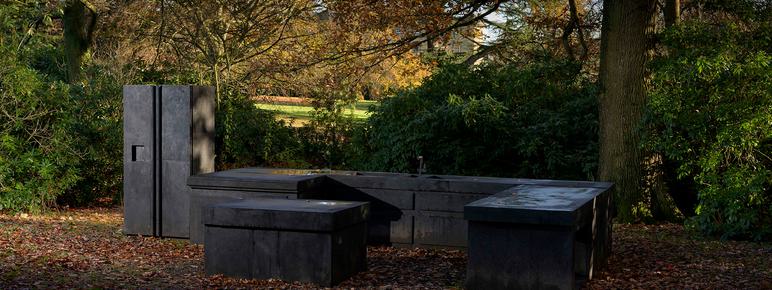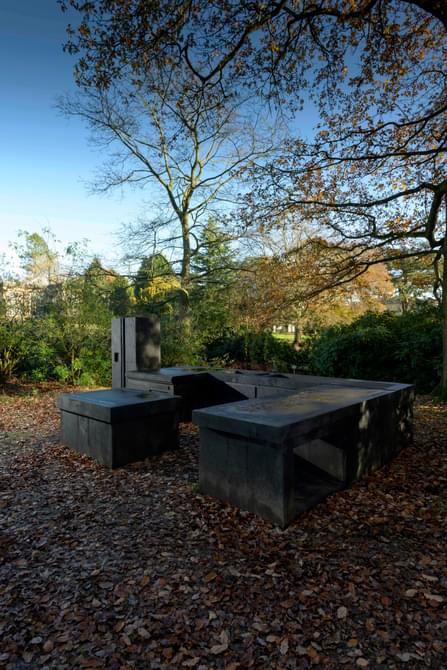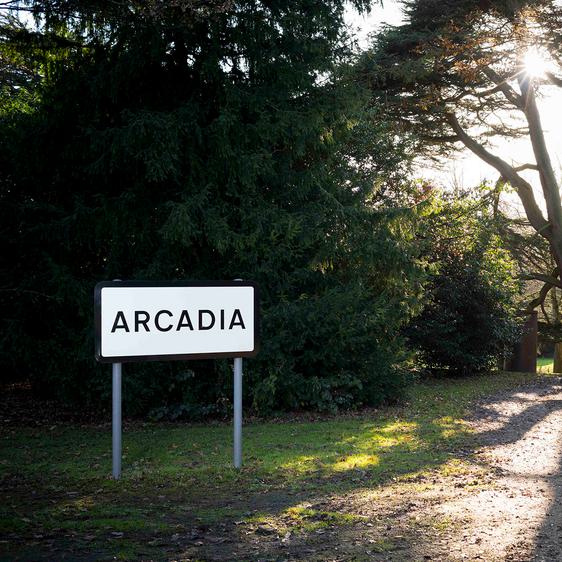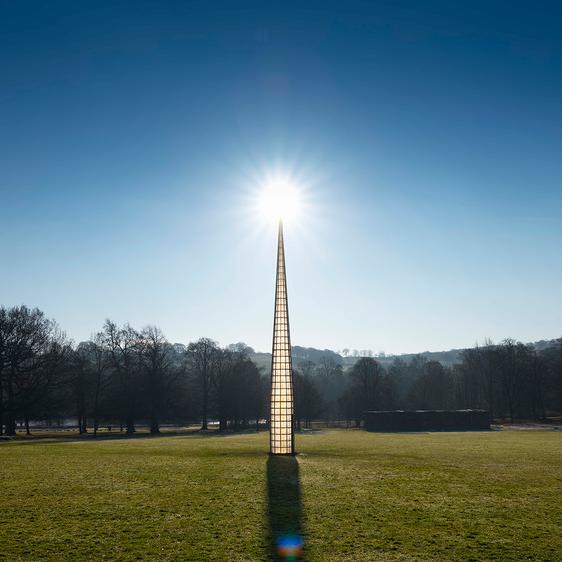
Joao Vasco Paiva: Standard Kitchen
Art Outdoors /Joao Vasco Paiva: Standard Kitchen
For Standard Kitchen, Vasco Paiva collaborated with artisans in East Bali. Together, they used the traditional method of carving Batu Candi, a lava stone often used for building temples and shrines. The stone was shaped to create a life-sized replica of a modular kitchen to consider the processes and spaces that are integral to everyday life.
Here at YSP, the work appears in the landscape like a piece of future archaeology. In the way that we learned about the lives of people before us from their surviving artefacts, such as cooking implements and dwellings, future researchers might find Standard Kitchen and gain insight into the typical lifestyle and ritual of those living in the 21st century and their domestic spaces.
The human form is largely absent from the artist’s work, instead he uses the traces left by humanity as a way to evaluate its purpose. The artist states, “How space is designed says more about people than if I include the human body.”


You might also like
- Art Outdoors

Leo Fitzmaurice: Arcadia
- Art Outdoors

Sean Scully: Wall Dale Cubed
Made for YSP, Wall Dale Cubed uses 1000 tonnes of Yorkshire stone from a local quarry and was constructed over many weeks. Importantly to the artist, this colossal work is built in the same way throughout, which connects to ancient stone walls in Ireland, so that ‘when looking at the outside of the block, one can feel the inside without being able to see it’. - Art Outdoors

Kimsooja: A Needle Woman: Galaxy was a Memory, Earth is a Souvenir
Kimsooja developed this elegant and towering conical sculpture in collaboration with scientists at Cornell University. The nanopolymer in which its panels are covered enhances the refractive qualities of light, giving an iridescent effect similar to that which occurs naturally on the wings of a butterfly or a beetle’s shell. It is responsive to changing light conditions and brought to life by sunlight on its surface. - Art Outdoors

Grenville Davey: Well